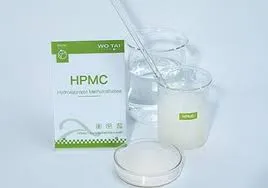
Abe . 18, 2024 00:52 Back to list
hpmc grades and uses
An Overview of HPMC Grades and Their Uses
Hydroxypropyl methylcellulose (HPMC) is a versatile, non-ionic, cellulose ether that is widely used across various industries due to its unique properties. It is synthesized from the natural polymer cellulose through the etherification process, which endows HPMC with solubility in water and improved film-forming capabilities. This article aims to delve into the different grades of HPMC and their applications across various sectors, notably in pharmaceuticals, food, construction, and cosmetics.
Understanding HPMC Grades
HPMC is available in multiple grades, each tailored for specific applications based on its chemical properties. The primary grades are classified according to their viscosity, degree of substitution, and solubility. The viscosity of HPMC is categorized into low, medium, and high grades, typically ranging from 1000 to 150,000 mPas. The degree of substitution influences its solubility and thickening properties; higher substitution rates enhance the water retention capacity, which is crucial for many applications.
1. Low Viscosity Grades These are usually employed as thickening agents in various formulations. They have a lower molecular weight and are particularly valued for their quick dispersion properties, making them ideal for applications that require rapid hydration.
2. Medium Viscosity Grades These grades strike a balance between thickening, stabilizing, and film-forming properties. They are commonly used in pharmaceutical formulations, such as controlled-release tablets and as binders in ointments and gels.
3. High Viscosity Grades Known for their exceptional thickening ability, these grades are favored in the construction industry for products like tile adhesives and sealants. Their ability to retain water improves the workability and performance of building materials.
hpmc grades and uses

Applications of HPMC
Pharmaceuticals HPMC plays a crucial role in the pharmaceutical sector, primarily as a binder, coating agent, and controlled-release matrix. Its hydrophilic nature and lack of toxicity make it an ideal candidate for use in extended-release drug formulations. Additionally, HPMC is used in ophthalmic solutions due to its ability to maintain moisture and improve the viscosity of eye drops.
Food Industry In the food sector, HPMC is used as a thickener, emulsifier, and stabilizer. It enhances the texture and consistency of food products, contributing to their shelf stability. HPMC is also employed in gluten-free baking as a replacer for wheat flour, helping to improve dough elasticity and moisture retention.
Construction In construction, HPMC is widely utilized as an additive in cement and mortar products. It improves the workability of mixtures and helps enhance adhesion, water retention, and open time. These properties are vital for ensuring the durability and longevity of construction materials.
Cosmetics and Personal Care HPMC’s unique properties also make it a popular ingredient in the cosmetics sector. It acts as a thickener and enhances the sensory feel of products. Its film-forming ability makes it suitable for use in hair styling products and skin care formulations, where it helps maintain moisture levels and improve product stability.
Conclusion
Hydroxypropyl methylcellulose is an essential compound in multiple industries, serving a myriad of functions thanks to its diverse grades and properties. From pharmaceuticals to construction and food at large, the applications of HPMC demonstrate its versatility and effectiveness. As innovations and developments in these sectors continue to evolve, the demand and importance of HPMC are likely to grow, reinforcing its position as a key ingredient in modern formulations. Understanding the specific grades and their corresponding uses allows manufacturers and developers to harness the full potential of HPMC, leading to enhanced product performance and consumer satisfaction.
-
Versatile Hpmc Uses in Different Industries
NewsJun.19,2025
-
Redispersible Powder's Role in Enhancing Durability of Construction Products
NewsJun.19,2025
-
Hydroxyethyl Cellulose Applications Driving Green Industrial Processes
NewsJun.19,2025
-
Exploring Different Redispersible Polymer Powder
NewsJun.19,2025
-
Choosing the Right Mortar Bonding Agent
NewsJun.19,2025
-
Applications and Significance of China Hpmc in Modern Industries
NewsJun.19,2025







